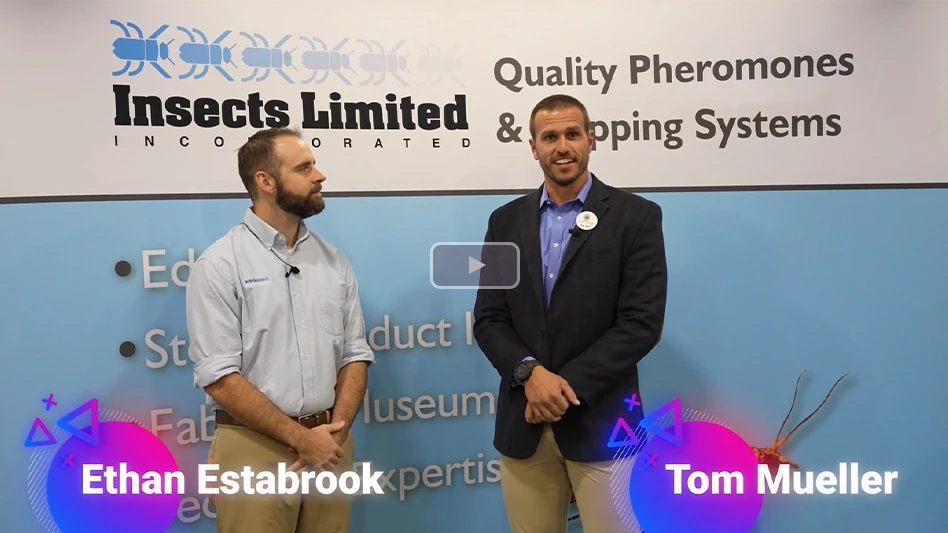
Adam’s Pest Control, a Food Protection Alliance member, knows it is crucial to monitor for one of the most destructive stored product pest in the United States – Indianmeal Moth. Following preventative measures to minimize the introduction and spread of IMM will help keep the insect problem under control. One way is by monitoring using approved IMM pheromone traps and ILTs to minimize the periodic space treatments.
FPA is an organization of regional companies formally organized to provide Food Safety / Pest Management / Fumigation / Alternative services and products throughout North America. 1-877-FPA(372)-3334.
The Indianmeal moth, also spelled "Indian-meal Moth" (IMM) (Plodia interpunctella (Höbner)) is among the most destructive stored product pests in the United States. The infestations of IMM are not limited to pantries inside homes, but also, they can thrive in grocery stores, food processing plants, grain storage facilities, and other areas where grain products, nuts, dried fruits, cereals, etc. are available. Besides consuming food, larvae also leave behind their feces, shed skins, silk threads and other debris. In addition, they are capable of chewing through thin plastic bags and cardboard.
Adults are about 3/8-inch long with a 5/8- to 3/4-inch wingspan. Adults are easily distinguished by the color of their wings. The outer half of the wing is reddish-brown colored; whereas, the inner half of the wing is grayishwhite colored. Eggs are small and grayish to dirty white. The mature larvae are about 1/2-inch long and dirty white, pink brown, or light green. The head and top of the first body segment behind the head are reddish-brown, yellowish brown depending on its food. Pupae are reddish-brown and about 3/8-inch long. They are enclosed inside silken cocoons.
 Different stages of the Indianmeal Moth beginning with the Adult on the left Different stages of the Indianmeal Moth beginning with the Adult on the left |
The optimal temperature for the development of IMM is between 79 to 84°F. This pest goes through a complete metamorphosis (four different life stages: egg, larvae, pupa and adult). Females lay between 39 - 409 eggs. Eggs hatch in 2 to 17 days. Larvae are the damaging stage, which feed and produce a silk-like "webbing" material throughout the infested areas and products. In heavily infested products, food materials may be completely matted with this webbing. Larvae mature in about 5 weeks, and just before they pupate, they move away from the infested products to spin cocoons. These cocoons can be found along ceiling/wall joints, on top of and under cabinets and shelves, in the folds of cardboard boxes or cartons, and nearby cracks and crevices. At this time, people generally start to notice the presence of the IMM problem. The pupal stage lasts about two weeks. The newly emerged adults mate and lay eggs about two to three days later. Adults live a relatively short period of time (2-30 days) and cause no damage. They simply mate, lay eggs and die. An entire life cycle can be completed within four weeks under favorable conditions. There are between 4-8 generations of IMM per year depending on the temperature, humidity and food conditions.
To successfully eliminate IMM, non-chemical methods, such as vacuuming cocoons and trapping adults with pheromone and insect light traps (ILTs) need to be carefully implemented. Heat or cold treatments (heat to an internal core temperature 140°F and hold for one hour or 120°F for two hours; freeze at 0°F for a week) can be used to destroy all life stages of IMM; otherwise, they need to be properly discarded outside the building inside a trash bin or dumpster. In heavy infestations, apply a space treatment with an EPA-approved non-residual insecticide to knock down the adult populations in warehouse and food processing facilities, as applicable. However, fogging alone will not solve the infestation problem. Keep in mind that the larvae, which are in pupae stage, have moved away from the food source, therefore, target all feeding, breeding and harborage areas using EPA-approved residual insecticides as crack, crevice and spot treatments where insects rest and places where larvae could reside or hide. Carefully follow the product label directions and DO NOT treat where food is present. If applicable, after cleaning and about two weeks before storing grain, treat with an approved residual insecticide all storage surfaces. Additionally, apply a perimeter treatment to prevent flying adults coming from outdoors during insect-active time of the year. The mating disruption technique can also be used to manage IMM. The presence of large amounts of sex pheromones confuses the males and limits their ability to locate and mate with females. Although mating disruptions will not provide complete elimination of IMM, they will help in reducing the flying moths to a tolerated level, especially in pesticide- sensitiv e locations, such as organic facilities.
Finally, we advise our clients to follow prevention measures to minimize the introduction and spread of IMM. Keep monitoring using approved IMM pheromone traps and ILTs to minimize the periodic space treatments.
Latest from Quality Assurance & Food Safety
- MARTOR Releases Metal Detectable Holster for SECUNORM 610 XDR
- FDA, CDC Investigate E. Coli Outbreak Linked to Organic Carrots
- USDA and Montana Award $3.1 Million to Projects That Strengthen Food Supply Chain Infrastructure
- PTNPA to Host Webinar Unveiling Post-Election Insights for Nut Industry
- Keep Food Safety in Mind This Thanksgiving
- FDA Updates Guidance for Voluntary Qualified Importer Program
- IDFA Announces 2025 Women's Summit
- Submissions Open for IAFP’s European Symposium on Food Safety





